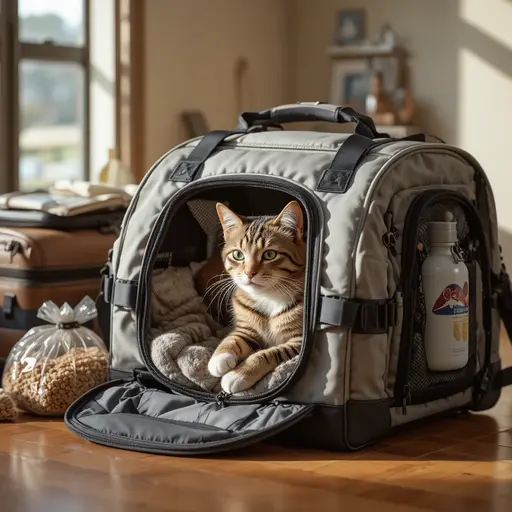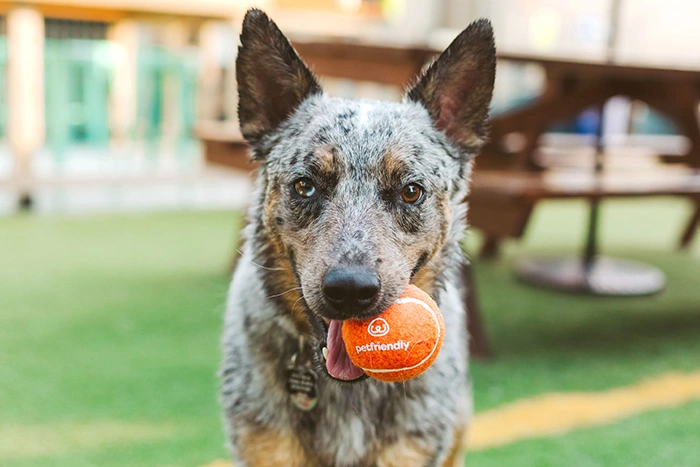Airline pet travel requirements include a valid health certificate issued within 10 days. This airline-approved carrier fits under the seat or meets cargo specs, requires up-to-date vaccinations, and adheres to breed-specific rules.
Start preparing 90 days early for domestic flights and six months ahead for international travel to avoid denied boarding.
These policies vary by carrier and can change without notice, but this guide provides the exact documents, costs, and timeline you need to navigate them successfully.
Why Airline Pet Travel Requirements Matter More Than Ever
Flying with pets isn’t as simple as buying a ticket and showing up. Airlines enforce strict airline pet travel requirements for three critical reasons: safety, health, and logistics. A pet that escapes its carrier on the tarmac risks injury or causing accidents. An undervaccinated animal could introduce disease to new regions. And an improperly sized kennel simply won’t fit in the cargo hold or under the seat.
Beyond airline rules, the USDA and international authorities set baseline standards. Ignoring them can result in:
- Denied boarding at the gate
- Quarantine upon arrival (especially internationally)
- Hefty last-minute fees
- Heartbreaking separations
Understanding these rules up front saves money, reduces stress, and keeps your pet safe.

The Two Ways Pets Fly: Cabin vs. Cargo
Before diving into specifics, decide how your pet will travel. This choice impacts every requirement.
In-Cabin Travel: Best for Small Pets
Most airlines allow cats and small dogs (typically under 20 lbs combined weight with carrier) to ride under the seat in front of you. Benefits include:
- Constant visual contact
- Climate-controlled environment
- Lower risk and stress
- Usually cheaper ($95–$125 each way domestically)
Requirements: Soft-sided carrier that fits under-seat dimensions, quiet behavior, and staying in the carrier for the entire flight.
Cargo Hold Travel: For Larger Pets
Bigger pets must fly as checked baggage or cargo. While cargo holds are pressurized and temperature-controlled, this option involves:
- Stricter crate specifications (IATA-approved)
- Weather embargoes (no travel if temps exceed 85°F or drop below 45°F)
- Higher fees ($200–$600+ each way)
- More documentation
Requirements: Hard-sided IATA-compliant crate, absorbent bedding, food/water dishes, and “Live Animal” labels.
Essential Documentation: The Paper Trail That Gets You Onboard
This is where most travelers stumble. Gather these documents early—some take weeks to secure.
Health Certificate (Veterinary Health Certificate)
Almost every airline requires a health certificate issued within 10 days of travel (international may require 7 days). Your vet must examine your pet and certify they’re healthy enough to fly. The certificate must include:
- Pet’s microchip number
- Vaccination records
- Statement of good health
- Vet’s license number and signature
Pro Tip: Schedule the vet appointment 8 days before departure to avoid expiration if your flight gets delayed.
Vaccination Records
- Rabies: Required for dogs and often cats. Must be administered at least 30 days before travel, but not expired.
- DHPP (Dogs): Distemper, hepatitis, parvovirus, parainfluenza.
- FVRCP (Cats): Feline viral rhinotracheitis, calicivirus, panleukopenia.
Keep original copies in a waterproof folder. Digital backups are smart, but always carry physical paperwork.
Breed & Age Documentation
Some airlines require proof of breed (especially for brachycephalic restrictions) and age (most require pets to be at least 8 weeks old).
Import/Export Permits (International Flights)
Flying to another country? You may need:
- USDA endorsement of the health certificate
- International health certificate (Form 7001)
- Import permit from the destination country
- Blood titer tests (rabies antibody) months in advance
Start this process 6 months before international travel.
Choosing the Right Carrier: Your Pet’s In-Flight Home
The carrier is non-negotiable. Get it wrong, and you’re grounded. Here’s what matters:
Size Requirements
Airlines provide specific under-seat dimensions that vary by aircraft. A universal safe bet for in-cabin soft carriers is approximately 18″ L x 11″ W x 11″ H—but always verify your specific flight.
For cargo, your pet must be able to stand, turn around, and lie down comfortably. Measure your pet from nose to tail base and floor to top of head when sitting.
Feature Checklist
Look for these must-haves:
- Escape-proof locking zippers: A scared pet can push through flimsy zippers. Heavy-duty locking mechanisms prevent disaster.
- Waterproof bottom: Accidents happen. A waterproof, leak-proof base protects the aircraft and keeps your pet dry.
- Ventilation on three sides: Required by most airlines for adequate airflow.
- Reflective trim: Helps you spot your pet in dimly lit cargo areas.
Product Insight: Premium carriers like the Sleepypod Air or SturdiBag meet most airline specs and collapse to fit restrictive spaces. They cost more upfront but eliminate last-minute gate-check disasters.
Getting Your Pet Carrier-Ready
Don’t wait until travel day. Start carrier training 3–4 weeks prior:
- Place the carrier in your living room with the door open.
- Feed meals inside it.
- Add a worn t-shirt that smells like you.
- Practice short car rides in the carrier.
A familiar carrier reduces anxiety and prevents frantic escape attempts at 30,000 feet.

Breed and Size Restrictions: What You Need to Know
Not all pets are treated equally in the eyes of airlines.
Brachycephalic (Snub-Nosed) Breeds
Due to respiratory risks, many airlines restrict or ban these breeds from cargo travel:
- Dogs: Bulldogs (English, French), Pugs, Boston Terriers, Shih Tzus, Boxers
- Cats: Persian, Himalayan, Exotic Shorthair
American Airlines, Delta, and United prohibit them in cargo year-round. Some allow them in-cabin if they fit size limits.
Solution: If you own a restricted breed, book early and confirm policies. Consider ground transport for long-distance moves. For anxiety, vet-prescribed calming aids (like Adaptil for dogs or Feliway for cats) can help, but never sedate without veterinary guidance—sedation increases respiratory risk.
Large Breed Workarounds
Pets over 100 lbs (including crate) may need to fly via specialized pet cargo services like American Airlines Cargo or Delta Cargo. These require separate bookings and have different cut-off times.
The 90-Day Pre-Flight Checklist
Timing is everything. Here’s a proven timeline:
90 Days Before
- Research airline policies and book a pet-friendly flight (nonstop is best)
- Check destination state/country import rules
- Measure and purchase an airline-approved carrier
60 Days Before
- Schedule a pre-travel vet consultation
- Update vaccinations if needed
- Begin carrier training
30 Days Before
- For international travel, complete a rabies titer test if required
- Request import permits
14 Days Before
- Book your pet’s spot (airlines limit in-cabin pets per flight)
- Confirm all documentation needs
10 Days Before
- Get a health certificate from a vet
- Print and organize all paperwork
48 Hours Before
- Call the airline to reconfirm the pet reservation
- Prepare pet’s travel kit (food, collapsible bowls, potty pads)
Day of Travel
- Exercise the pet before leaving home
- Arrive 2 hours early (3 hours for international)
- Keep digital and physical copies of all documents
Cost Breakdown: Budgeting Beyond the Ticket
Pet travel costs add up. Plan for:
- In-cabin fee: $95–$125 each way (domestic)
- Cargo fee: $200–$600+ each way (based on weight)
- Health certificate: $75–$200 (vet exam fee)
- Carrier: $40–$200 (one-time investment)
- International endorsement: $38–$173 (USDA APHIS fees)
- Import permit: $10–$100+ (varies by country)
Hidden Costs: Overnight airport pet hotels if layovers exceed 4 hours, ground transport if denied boarding, and emergency vet visits if travel causes illness.
Day-of-Travel Secrets from Frequent Fliers
Even with perfect paperwork, execution matters.
Food and Water
Feed a light meal 4 hours before departure. Offer ice cubes in the carrier instead of a water bowl to prevent spills. Gel water packs (like Nurtural travel bowls) keep pets hydrated without mess.
Potty Breaks
Most airports have pet relief areas post-security. Use the All Trails or GoPetFriendly apps to locate them. Lay down an absorbent pad in the carrier as backup.
Security Screening
You’ll remove your pet from the carrier and carry it through the metal detector. The carrier goes through X-ray. Use a harness and leash (not a collar) to prevent escape. Practice at home so your pet isn’t spooked.
Marking Your Carrier
Attach a luggage tag with your contact info and flight details. Snap a photo of your pet in the carrier before check-in—if they escape, you have proof of their appearance and size for airline staff.
Calming Aids That Work
Avoid sedation. Instead, try:
- Zylkene: Natural calming supplement (start 5 days before)
- ThunderShirt: Applies gentle pressure to reduce anxiety
- Pheromone sprays: Adaptil or Feliway sprayed in the carrier 15 minutes before travel
International Airline Pet Travel Requirements
Crossing borders? Requirements multiply.
Rabies-Free vs. Rabies-Controlled Countries
Flying to the UK, Australia, or Japan (rabies-free) requires blood titer tests months ahead. Flying to Mexico or Canada is simpler but still needs health certificates.
USDA Endorsement
Your vet’s health certificate must be mailed or walked into a USDA APHIS office for endorsement. This takes 1–3 business days and costs $38–$173. Some countries require this step after the health certificate is issued, creating a tight timeline.
Quarantine
Hawaii and many island nations enforce quarantine unless you follow exact protocols (OIE-FAVN rabies blood test, 120-day waiting period). Skip steps, and your pet faces 30+ days in quarantine—for $1,000+.
Banned Breeds
Some countries ban specific breeds entirely (e.g., Pit Bull types in the UK). Check the destination’s agriculture department website.
Pro Move: Hire a pet travel agent for complex international moves. They cost $500–$1,500 but handle the bureaucracy. For DIY, the USDA’s Pet Travel Tool is invaluable.
Airline-Specific Pet Policies: The Devil Is in the Details
While this guide covers universal airline pet travel requirements, always verify your carrier’s latest rules. Here’s a snapshot:
- American Airlines: Accepts pets in-cabin and cargo, but no checked pets, May–September to some hot destinations.
- Delta: Strong cargo program but prohibits brachycephalic breeds in cargo. Requires a pet health form in addition to the health certificate.
- United: Pets in-cabin only; no cargo service for pets as of recent policy changes. Uses PetSafe cargo for separate bookings.
- Southwest: In-cabin only, $95 each way, first-come-first-served (limit 6 per flight).
- JetBlue: Offers JetPaws program with perks; $125 each way.
- Alaska Airlines: Most generous policy—accepts pets in-cabin, as checked baggage, and cargo.
Action Step: Bookmark your airline’s pet policy page and call to confirm 48 hours before travel. Policies change seasonally.
FAQs About Airline Pet Travel Requirements
Can my puppy or kitten fly?
Most airlines require pets to be at least 8 weeks old and weaned. Some require 12 weeks for international flights. Younger animals have weaker immune systems—consult your vet.
What if my pet is too stressed to fly?
Consider ground transport. Companies like CitizenShipper or Royal Paws specialize in long-distance pet transport. It’s often cheaper than cargo for one-way cross-country moves.
Are emotional support animals (ESAs) still allowed?
The DOT ended ESA protections in 2021. ESAs now follow standard pet policies and fees. Only trained service dogs fly free.
Can I sedate my pet?
The AVMA and most airlines advise against sedation—it can cause respiratory and cardiovascular issues at altitude. Opt for natural calming aids instead.
What happens if my flight is delayed?
Airlines must provide potty breaks for delays over 2 hours. For long delays, they may move your pet to a climate-controlled holding area. Always carry extra food and a portable water bowl.
Conclusion: Take Off with Confidence
Mastering airline pet travel requirements isn’t about memorizing every rule—it’s about building a system. Start early, double-check details, and invest in quality gear that prevents problems before they start. The right carrier, organized paperwork, and a calm, prepared pet turn a potential nightmare into just another travel day.
Your pet depends on you to be their advocate. With this guide, you’re equipped to navigate policies, avoid costly mistakes, and focus on what matters: creating memories together, whether you’re landing in a new city or a new country.



